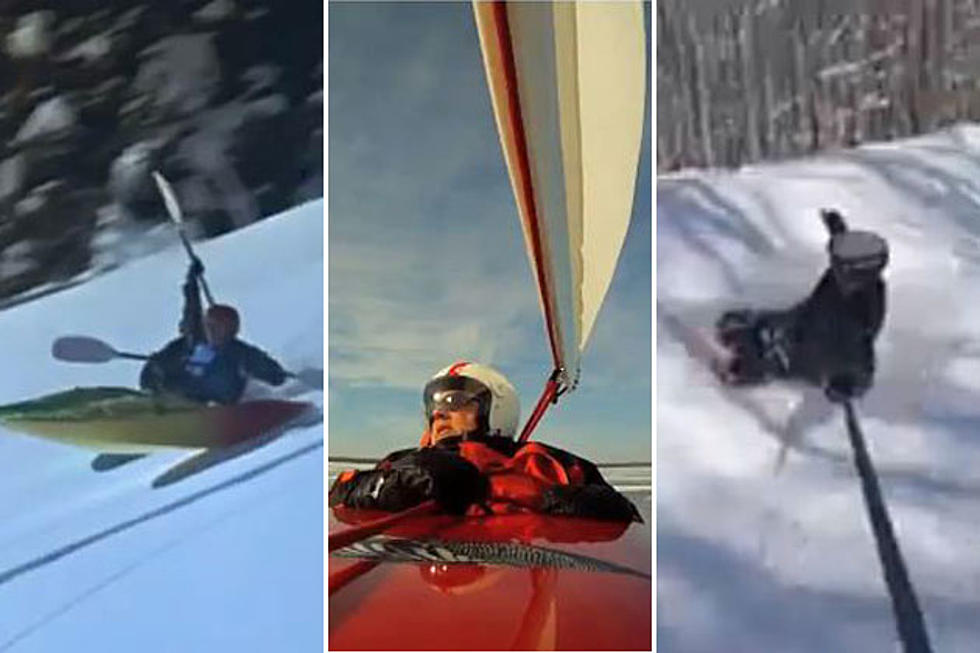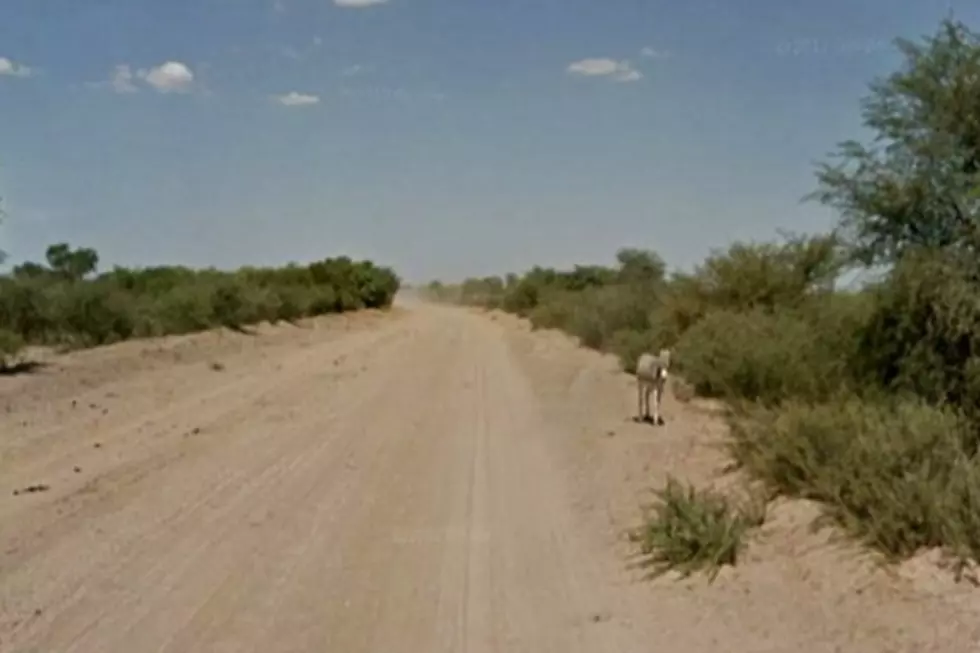
10 Unusual Winter Activities You Might Not Know About
This winter, when the snow is piled high outside your doorway, or in the mountains nearby, you could head out into the cold and build a snowman or have an epic snowball fight. Those are some time-honored winter traditions, yet when the temperature drops, there’s so much more you can do.
Ingenious (or perhaps crazy) people have been coming up with some unusual and wild winter activities over the years to help them pass the time. You might have even heard of a few of these sports, like ice sailing and igloo building, but our guess is that many of these strange winter events are still a mystery to you. That’s why we’re here –– to enlighten you on your cold weather recreational options. That said, we are not responsible for your safety. If you do choose to take part in any of these winter sports, do so at your own risk. Of course, more risk generally means more fun, but also more potential bruises and broken ribs.
Skijoring
Skijoring is mushing behind a couple of dogs across the snow while the musher rides on a pair of skis. The name skijoring comes from Norwegian. For variety, horse skijoring also exists. You don’t ride the horse, but get dragged behind it. The horse is the “powerboat” that pulls the skier along. You can opt to have one or two dogs haul you down a snowy track, although if you choose a horse, only one should suffice. Horse skijorers have the opportunity to tackle some pretty tall jumps, thanks to the extra speed. It seems people will go to great lengths these days in search of some fun.
Ice Sailing
The name says it all: Ice sailing is sailing across frozen bodies of water. This sport takes more money to get into, than say, ice blocking, but it’s truly a thrill for those who are lucky enough to get to do it. Ice sailing, also known as ice boating and ice yachting, requires a sleek sailboat mounted on runners, which glides across a frozen lake or pond. Some skill is required to do it properly, and it can be quite dangerous, but with some incredible speeds on record, it can also be incredibly exciting. Make sure you get the proper training and equipment before trying this sport out for yourself.
Snow Kneeboarding
Yep, snow kneeboarding (also known as redneck kneeboarding) really does exist, although you might have to do a bit of searching until you find a community that has embraced it wholeheartedly. (There are a few towns in Colorado, like Colorado Springs, that might be a good place to start.)
Traditional kneeboards are built for water towing. The “redneck” winter version of kneeboarding consists of a car or snowmobile hauling the boarder across a snowy field. Yes, this sport is as dangerous as it sounds. With great risk comes great rewards, which in this case means wild kneeboard rides.
Igloo Building
If you love the snow, and love architecture, why not take part in an igloo building competition this winter? You can usually find them where there is a lot of ice and snow, like Grand Falls in New Brunswick, Canada. If there aren’t any competitions in your neck of the woods, you can become a pioneer, and start one yourself. Igloo building is tons of fun, and a great way to hang out with your friends in the snow while showing off you building and artistic prowess. If you’re a novice to the whole process, you can find plenty of detailed igloo building guides online.
Shovel Racing
Shovel racing is a “sport” that’s pretty easy to get into. All you need to get started is some kind of slope covered in snow, thick winter bibs and a shovel. A helmet is also advisable, since you’ll be moving pretty fast. You also might want to choose a shovel that doesn’t end in a sharp point, because you’ll be sitting on the blade of the shovel, with the metal squeezed in right between your legs.
Some people take this sport very seriously, and wax their shovels in an attempt to make them glide faster. In competition, shovel riders can reach speeds of more than 60 miles per hour. When racers spill hard, they feel the pain.
Wok Racing
Wok racing is akin to shovel racing, but competitors race down icy tracks on modified Chinese cooking woks. The Germans first concocted this unusual and inventive sport. Real wok races take place on professional luge and bobsled tracks, which allows athletes to clock in some fairly impressive speeds.
Of course, if you don’t have access to a bobsled track, you can slide down any old hill on your mother’s wok, but if you aspire to true greatness, you might want to check out some of the “wok masters” taking part in the world championships, held in Innsbruck, Austria, every winter.
Ice Blocking
Ice blocking is a straightforward “sport,” if you want to call it that. Many people ice block in the summer, but it's an activity you can do any time of the year. If you tackle the slopes when the weather is cold, with a light frost on the ground, your ice block will last a lot longer. You’ll need a grassy hill of some sort, large ice blocks, friends (to laugh at you) and maybe some alcohol to get into the spirit.
Simply sit or sprawl across your ice block and then slide down the hill until you fall. This is the perfect sport for places that cool down a little (or not at all) in the winter, but don’t get a lot of snow. Ice under your belly or backend will make you feel some of the frost associated with winter elsewhere.
Curling
You might have heard of curling before, since it’s a Winter Olympic event, but did you know that there are curling clubs all over the country? Yes, you too can take part in this, well, not really edge-of-your seat exciting type of event, but still, it looks pretty fun. Curling is a bit like billiards combined with bowling and sweeping –– on ice. If you’ve ever played shuffleboard, you might be pretty good at this.
Snow Kayaking
Who says you have to stop kayaking when the rivers and lakes freeze over come wintertime? Snow kayaking is just the solution for paddle aficionados who are experiencing cold weather withdrawal and a touch of the winter blues.
Running a kayak on snow works almost the same as it does on water, except rather than let the current of a river push you along, gravity is your friend, dragging you down the mountain slope. You don’t have to worry about rocks jutting out of the water, but you do have to avoid snow-laden trees, which can really cause some damage if you smack into them.
Polar Bear Swims
For those of you who have a high tolerance for the cold, or are somewhat masochistic in nature, you might want to think about joining a polar bear club when the temperatures dip down below zero. Depending on your perspective, diving into icy water with your friends might be extremely enjoyable, or else a painful right of passage into an obscure cult of ice swimmers.
If you do take a polar bear plunge or swim, no one will ever have the right to call you “wimpy” again. This is definitely an activity for the brave, as well as people with a little extra fat on them, which can act as insulation against the cold.
More From 96.5 KVKI










